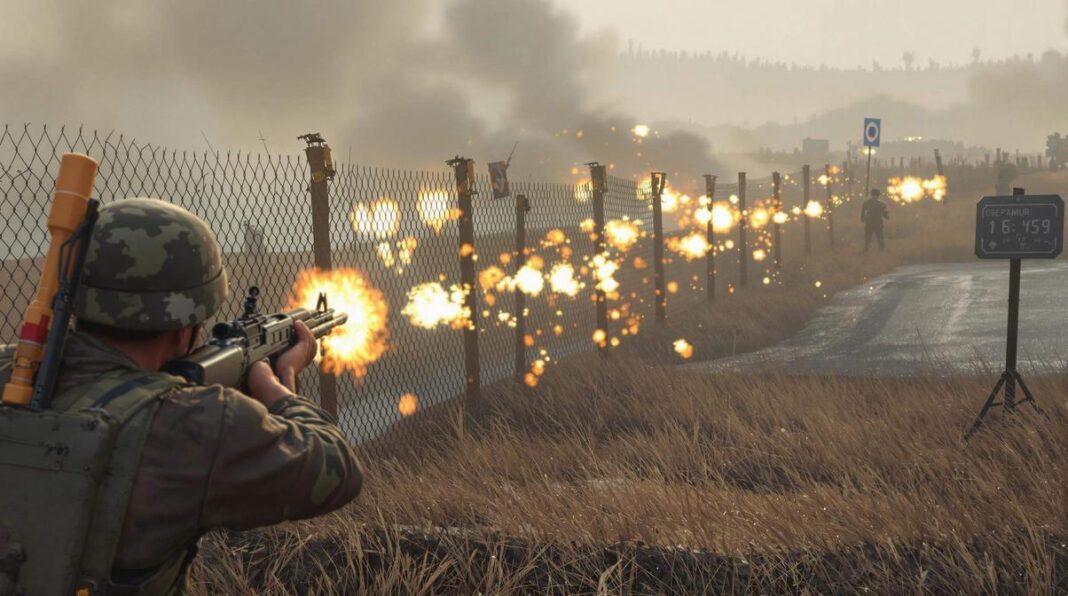North Korean soldiers briefly crossed into South Korean territory at the heavily fortified Demilitarized Zone (DMZ) on April 8, prompting South Korean forces to fire warning shots before the group retreated.
According to South Korea’s Joint Chiefs of Staff report, approximately 10 North Korean soldiers crossed the military demarcation line in the eastern section of the DMZ around 5 p.m. local time.
“Our military conducted warning broadcasts and warning shots after about 10 North Korean soldiers crossed the military demarcation line (MDL) in the eastern area of the demilitarised zone (DMZ) around 5:00 pm local time,” the Joint Chiefs of Staff said in a statement.
The incident occurred amid heightened tensions on the Korean Peninsula, with both nations maintaining vigilant military postures. The North Korean soldiers returned to their territory without returning fire, preventing any escalation of the situation.
The DMZ, stretching 155 miles long and 2.5 miles wide, remains the world’s most heavily militarized border. Military experts estimate the area contains approximately two million landmines, alongside extensive fortifications including tank traps and barbed wire.
This border violation follows similar incidents from June last year, when North Korean troops crossed the border three times, resulting in warning shots from South Korean forces. Those crossings were later assessed as unintentional.
The incident comes during a period of political uncertainty in South Korea following President Yoon Suk Yeol’s removal from office, while North Korea continues to strengthen its ties with Russia amid ongoing tensions over Ukraine.
Despite U.S. President Donald Trump’s expressed interest in reviving diplomatic talks, North Korea has remained unresponsive to calls for denuclearization discussions, maintaining its stance on alleged U.S. hostilities.
South Korean military officials continue to monitor the situation closely, maintaining their standard defensive posture along the border while following established operational procedures for such incidents.


